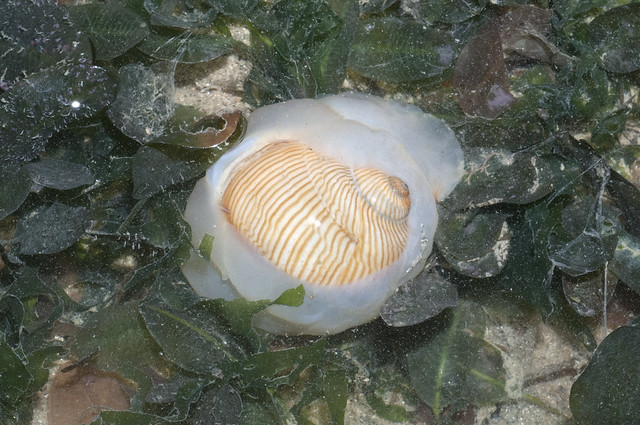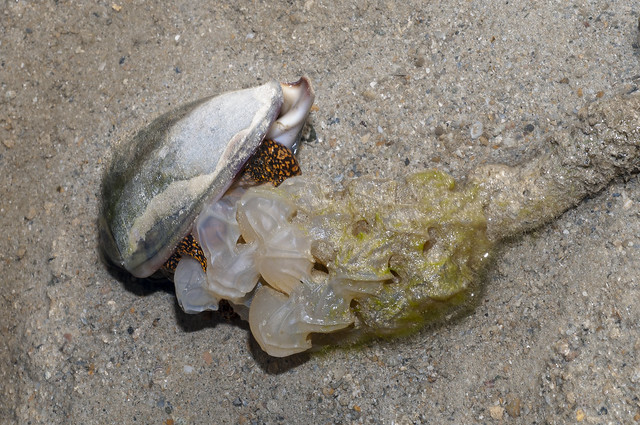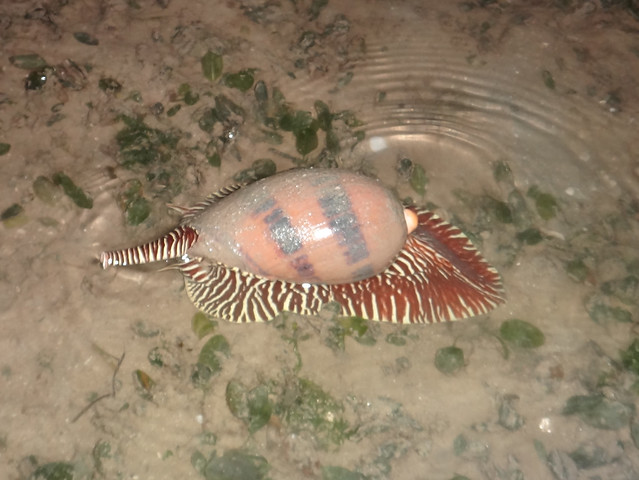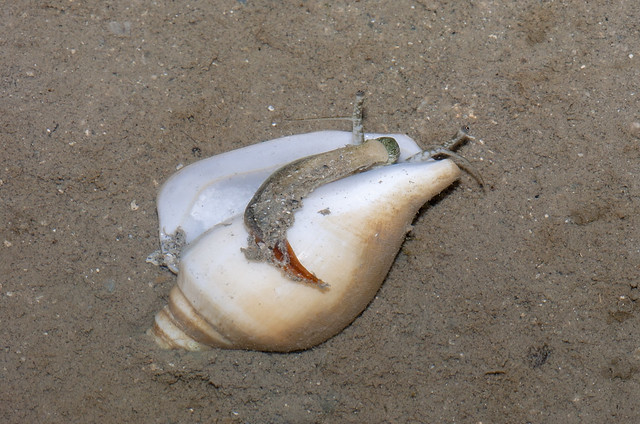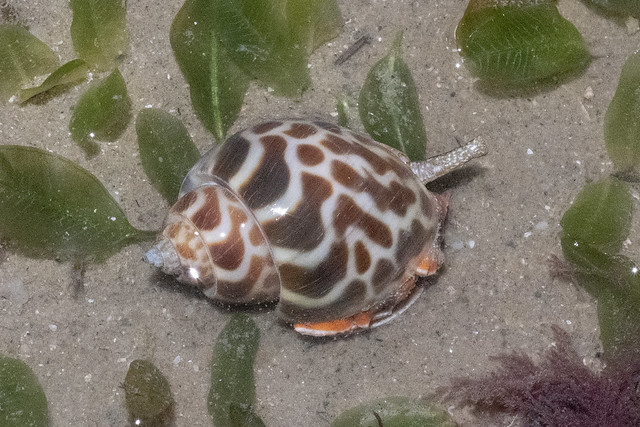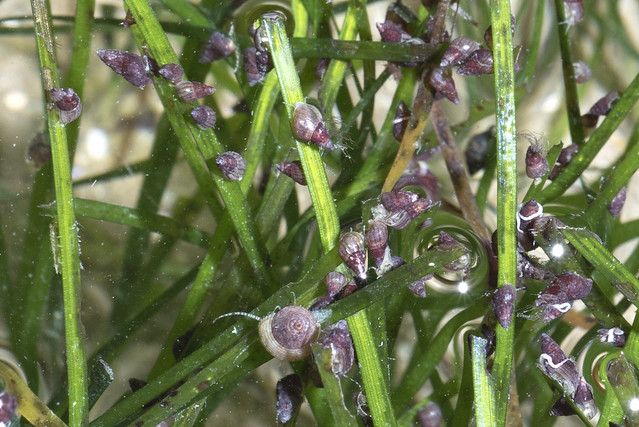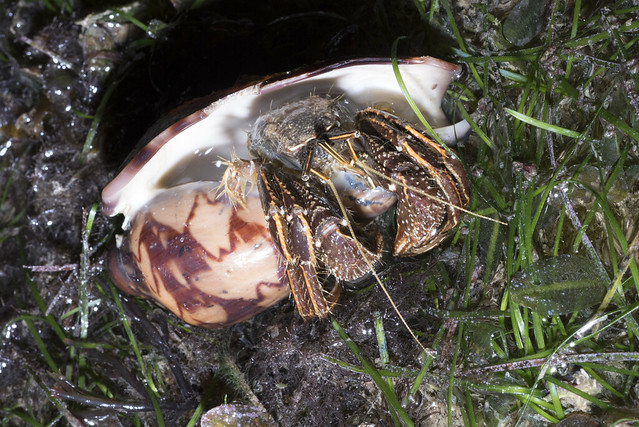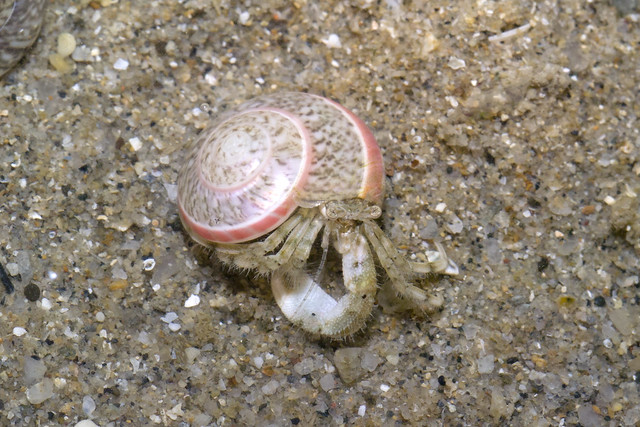Here's a glimpse at the snails of Singapore's seagrass meadows.
Many colourful moon snails can be found in or near seagrass meadows. These ferocious predators hunt buried clams. A moon snail wraps its huge foot around the hapless prey to suffocate it. If this fails, it has a gland at the tip of its proboscis that secretes an acid to soften the victim's shell. With its rough 'tongue' (radula), a hole is slowly drilled through the shell. The hole created by a moon snail is usually neat and beveled. Some of our moon snails have patterned shells. Others have patterned bodies. They are more active at night.
 |
| Clockwise from left: Lined moon snail, Tiger moon snail, Calf moon snail, Pink moon snail, China moon snail, Spotted moon snail. |
Another amazing colourful predatory snail is the Noble volute. Here is a video of one hunting a clam. The clam uses its large muscular foot to leap away! According to the Singapore Red Data Book, this handsome snail is restricted to our part of the world, in particular, Singapore and Peninsular Malaysia.
The Noble volute lays large beautiful semi-transparent egg capsules. The capsules are usually stacked up to form a cylindrical, generally oval shape and the entire assembly attached to a hard, embedded object such as coral rubble.
The Baler volute is a huge predatory snail that hunts other snails. It uses its large foot to capture prey. Sadly it is no longer commonly seen and is listed as 'Endangered' in the Red List of threatened animals of Singapore due to habitat loss.
The Gong-gong is a conch, turbo-charged snails which don't slowly creep along. Instead, a conch can 'hop', digging its modified claw-like operculum, at the end of muscular foot to pushes against like a pole-vaulter. Like the spoiler on a sports car, the flared shell keeps the conch down as it hops around and helps it from being rolled about in the currents. Being so speedy (for a snail) the conch has large eyes on stalks. While most snail eyes generally only detect light, it is believed that the eyes of the conch snail may actually produce an image! So the Conch is truly a sports version of a snail.
The Black-lipped conch is more commonly seen in seagrasses in our Southern islands. It also 'hops' along like other conch snails.
The colourful Spiral Babylonia snail was first described on Singapore's northern shores in 2013.
There are also lots of small snails among the seagrasses, like these Tiny seagrass snails,
Leave shells on the shore!
Empty shells are vital to hermit crabs. We should not take home empty shells from the shore as we might be depriving a hermit crab of a home.
Tiny shells shelter tiny hermit crabs. Even broken shells can be homes for hermit crabs.
Just take a photo and admire the shells and leave them on the shore.
Where can I see these animals in Singapore?
One of the best ways is to join intertidal walks by NParks at Chek Jawa, Pulau Ubin or the Sisters Islands Marine Park. Or check out these opportunities to explore our shores through walks, or during volunteer work for our shores.
Here's more about Singapore's seagrass meadows and how you can visit them and make a difference for them.
Learn more about Singapore's marine snails on the wild fact sheets on wildsingapore.
This article is written for Celebrating Singapore Shores as part of International Year of the Reef 2018.

